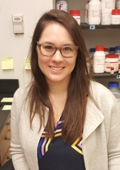Defining how cell communication and cooperation drive tissue form and function.
The Green Lab
Just as communication between people is essential for our society to thrive, so too is communication between cells in a multicellular organism essential for its existence. Our group shares a passion for understanding how cells physically stick together to provide mechanical strength to tissues and how adhesion molecules convert mechanical and other environmental cues into signals that drive individual and collective cell behaviors in development, differentiation and disease. We are also passionate about converting our curiosity-driven research into practical knowledge that can help us diagnose and treat adhesion-related diseases, including inherited, autoimmune and bacterial-toxin mediated skin disease, heart disease and cancer. The Green Laboratory is dedicated to an open, collaborative and inclusive research environment promoting high impact research. The lab mentors a diverse team of individuals from different disciplines, backgrounds, perspectives and expertise for a future as independent scientists, educators and professionals in allied fields.

The Latest From the Lab
Lab Leadership
Kathleen J. Green, PhD
Joseph L. Mayberry, Sr., Professor of Pathology
Professor of Dermatology
Associate Director of Basic Sciences, Robert H. Lurie Comprehensive Cancer Center


